Be sure to check for porcupines when you make a late-night bathroom run.
This is one of the first things you learn upon arriving at Scout camp in the Pennsylvania woods.
The adolescent mind has no trouble imagining various exceedingly unpleasant scenarios that could emerge from such a midnight meeting. Ouch.
And unlike most of what I learned at Scout camp, this bit of lore was actually based on truth.
Porcupines really do frequent backwoods outhouses.
Because they eat them.
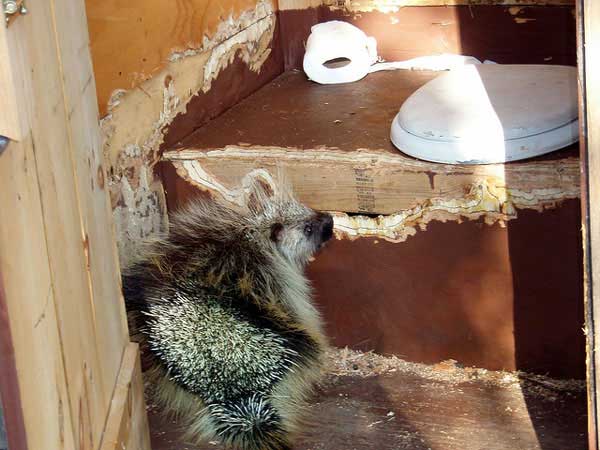
I’m serious. I know that porcupines are kind of like over-exposed celebrities. They attract rumor and tabloid-style coverage, most of it myth. This is to be expected for something covered in barbed quills.
But this story is true. It’s well documented in the literature, and it’s based on porcupine physiology.
North American porcupines (Erethizon dorsatum) feast on a high-potassium, low-sodium diet of foliage, causing them to excrete high levels of sodium. This creates a sodium-potassium imbalance.
While research has shown that porcupines can physiologically tolerate this imbalance at times of the year when their mobility is limited (like during heavy snowfall), most of the year they have a craving for salt.
They often seek out natural mineral licks for their needs. But the human environment is not low in sodium. We have created a salty feast for the porcupine.
Like outhouses. Urine is high in sodium. Combine this with the notoriously bad aim of boys, and you have porcupine nirvana.
The walls of my old Scout camp outhouse looked like they had been run through a wood chipper, so heavily were they gnawed by quilled rodents.
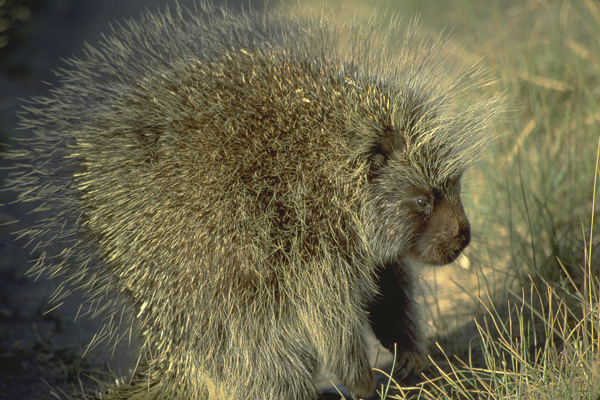
What else does a porcupine chew?
The salt craving leads the critter to all sorts of strange places. Some items on this list are cited in the literature; others seem more anecdotal. And at least one is just flat-out crazy.
Cars. Roads are de-iced with salt in the winter. This salt coats the car tire and splashes up underneath the auto body. As night falls, the porcupine stealthily chews on car parts, many of those parts out of sight of the owner.
This created a harrowing situation for nature writer and ethicist Tovar Cerulli:
[The porcupines] had nibbled through a brake hose… a problem I discovered on the way to work the next morning, when my foot went to the floor without slowing my pickup at all. I was grateful for a long driveway and a hand brake. The truck—our only vehicle at the time—was out of commission for three days while a replacement hose was located.
Cerulli writes eloquently of cultivating a mindful relationship with wildlife. This incident tested him. Sorely.
Axe handles and canoe paddles. Human engages in vigorous activity. Sweats on tool. Gets tired. Leaves tool outside. Porcupine eats.
Firearms. The porcupine practices a unique form of gun control. It eats them.
Like the previous example, this one relies on a sweaty outdoors enthusiast leaving a tool outside. This is a particular favorite of pulp outdoor literature.
But like other staples of this genre – charging wolverines and the big one that got away – it seems to happen more in print than in real life.
Saddles. Horses sweat too. Especially horses on long backcountry pack trips. I imagine salty leather is somewhat akin to the porcupine version of beef jerky.
Your face. The Catskill Mountaineer offers this tantalizing sentence: “Hikers have reported porcupines licking their skin while sleeping.” Really? I cannot imagine waking up to a kiss from a quilled rodent. Has this ever actually happened?
But in case you’re thinking about not rinsing off your face after a hard day’s hike on the Appalachian Trail?
Well, you’ve been warned.
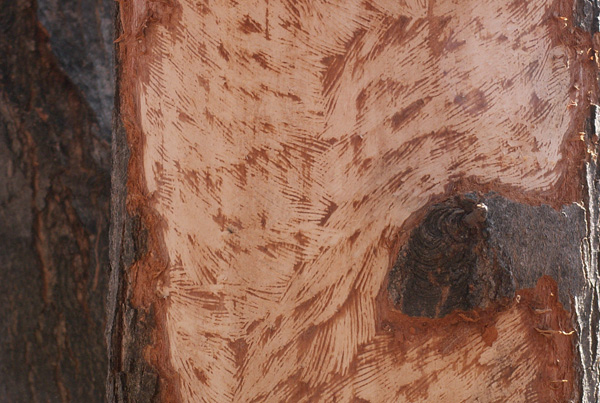
Plywood. The resin used to bind plywood is sodium based, making it an ideal porky snack. There is a patent for “porcupine proof” plywood, based on a potassium resin, but it doesn’t seem to have caught on.
Porcupines used to be considered a much bigger problem for home owners. In the 1800s, when pioneers kept large quantities of salt in their cabins, porcupines reportedly chewed through walls at night to get at the stash.
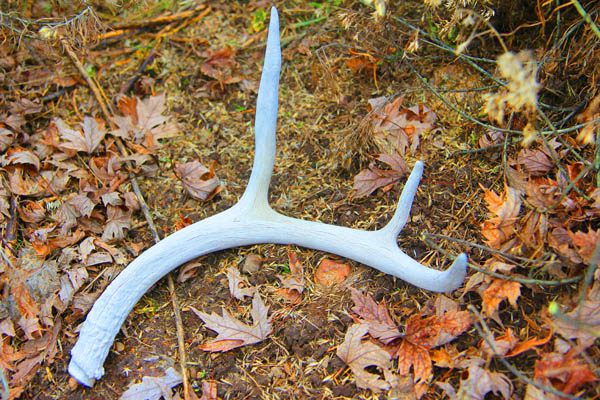
Antlers. Antlers are rich in minerals and shed every spring. It’s a veritable feast. Provided the porcupine beats eager shed hunters.
Bigfoot bones. Faces, and gunstocks, are at least in the realm of possibility. This one belongs to science fiction, and is almost too silly to mention.
But start researching porcupine diets and you’ll soon land in Bigfoot’s lair.
Cryptozoology fans posit that the reason no one ever finds the bones of dead sasquatches is because – you guessed it – porcupines eat them!
Of course they do.
This idea was popularized on the regrettable Animal Planet show Finding Bigfoot. Of course, this is the same bastion of journalistic excellence that claimed sasquatches are attracted by raves.
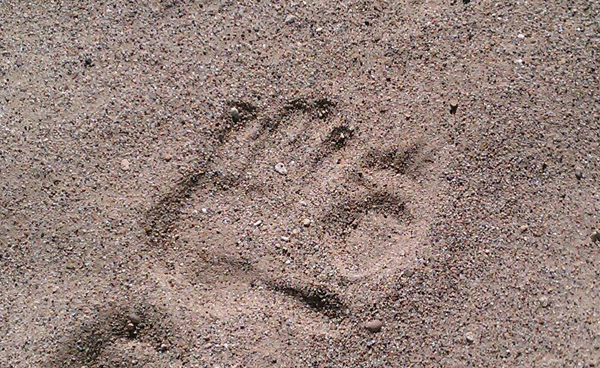
Porcupines do dine on bones. But anyone who spends much time poking around the woods knows they don’t eat every bone in the forest.
Not that this fact is likely to dissuade the True Bigfoot Believers. It can dissuade the rest of us from regarding cryptozoology as science.
Tree bark. Once, society regarded porcupines as a major nuisance. This was based not just on its love of salt, but also its dietary staple of tree bark.
Anything that girdles trees must harm the timber industry, or so conventional wisdom went at the time.
Many states paid bounties on dead porcupines until the 1920s (and in the case of New Hampshire, until 1979). When actual research was conducted they found that this was untrue. Not “porcupines eat sasquatch” untrue – but in no way a major factor in timber harvests.
The reintroduction of fishers, a major porcupine predator, keeps their populations in check.
Today, porcupines can be at worst a localized problem – although a not insignificant one is your car has no brakes or you’re literally up the creek without a paddle.
Still, they’re fascinating critters. Just keep your valuables out of reach, and watch where you sit in backcountry outhouses.
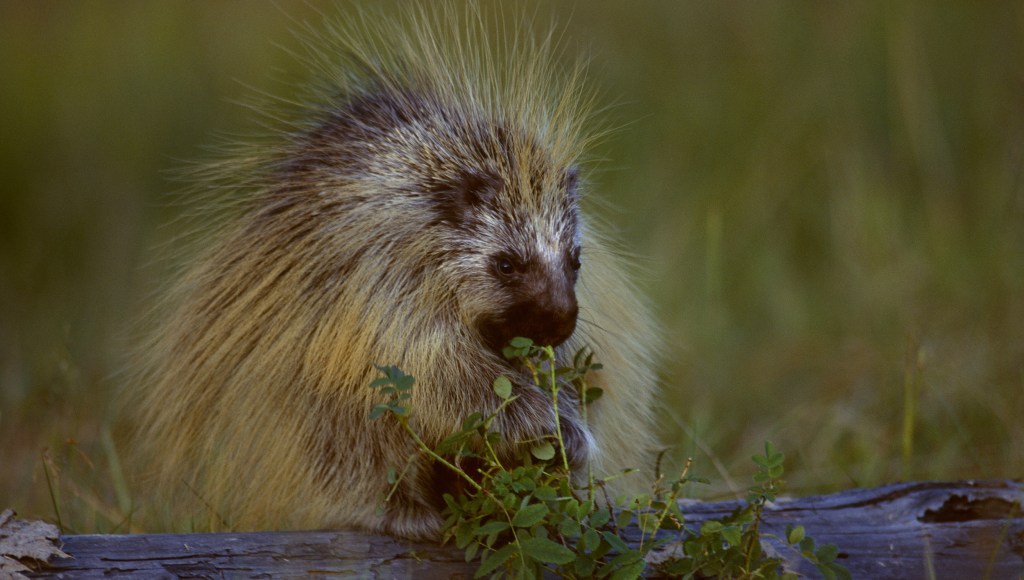



We have a porcupine that visits every day; he is fantastic. One has to be sensible. I even can pet him without a glove. People are sick to demonize animals so much. I absolutely feel that when you drive your car that is far, far worse than any porcupine that waddles by. No porcupine is ever going to attack your face. Your car, on the other hand, could.
What may I use to lure them to get into a trap?
How can we get rid of one that is destroying our weekend cabin during the week
Do they eat Trex or cedar deck boards ? Porcupines
Porcupines are pretty cool
I have an injured porcupine living on my property and the only thing it will eat is the leaves of cedar trees.
Keep your backpack and your boots out of porky reach when you’e camping — the sweat on them attracts the beasts, who’ll chomp on them, too.
what can you use to keep porcupines from chewing your steps that you have put salt on to keep
the steps from getting iced up?
They also like pack straps, as a friend found, to her dismay, on a backpacking trip, and boots (preferably not on your feet).
Fantastic essay on our prickly rodent. Thank You.
WOW. Thank you for all that you have done & will continue to do to save OUR EARTH.
Thanks for this informative post. I knew a porcupine had “attacked” the outhouse but I didn’t know why. I am blogging about it on 8/1/2017 at http://www.birdsoutsidemywindow.org/2017/08/01/who-ate-the-doorknob/
Great article. Despite Pine-sol, Havoc, wasp spray and thumbtacks, a porcupine continues to wake me from my sleep gnawing on the deck bolsters.
Will they eat wood steps made from pine?
How can one deter them?
Thanks.
If foresters hadn’t killed the porcupines, they wouldn’t have to spend so much money and time thinning forest to prevent fires now.
The critters are nearly extinct in Southwestern Oregon.